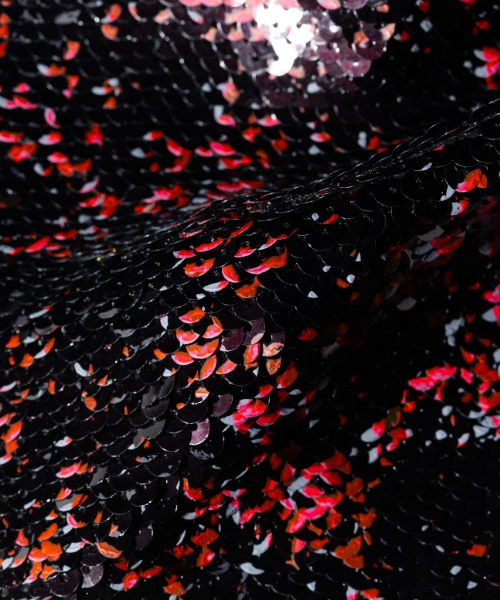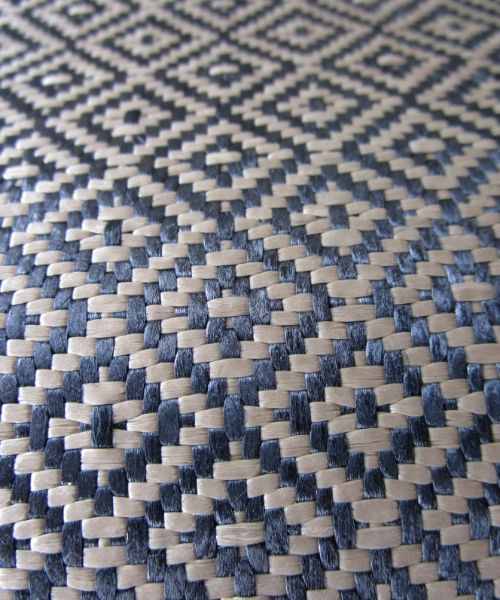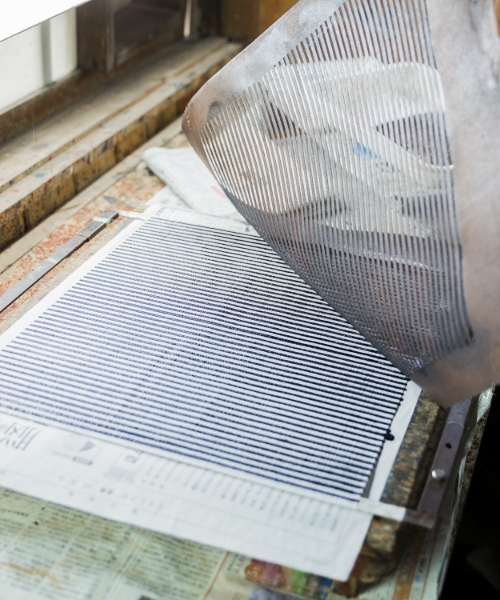Maison d’Exceptions: Step into the world of ultra-creativity The - Maison d'Exceptions - Première Vision Paris
Maison d’Exceptions is back for its 12th edition from 11 to 13 February at the heart of Première Vision Paris. Exclusively reserved for luxury brands and accessible by invitation only, this space is dedicated to rare and cutting-edge know-how.
You would like to access this reserved area?
Maison d’exceptions is exclusively reserved for professionals in the luxury markets. To ensure optimal working conditions for the ateliers and visitors present, Première Vision reserves the right to control access to this area.
We invite you to go to the entrance of Maison d’Exceptions area – Hall 5, between Tuesday 11 February and Thursday 13 February.
With the Maison d’Exceptions project, Première Vision aims to showcase international craftsmanship and stimulate creative excellence. Brands and fashion designers looking for unique products and specific expertise will be able to meet with 23 ateliers and artisans who will unveil their unique techniques, whether contemporary or ancestral. Embroideries, accessories, feathers, mother-of-pearl finishings… the space is designed to propose exclusive, creative and unique or custom-made products: crafts of excellence led by passionate artisans, delighted to share their know-how.
Contemporary techniques
Ultra-creative embellishments, hand embroidery, mother-of-pearl plating, paper, horsehair, metal meshwork… twelve ateliers featuring contemporary techniques will celebrate the intertwining of modern-day knowledge with the world of arts and crafts.

Cécile Feilchenfeldt Knitwear studio Paris
Cécile Feilchenfeldt, born in 1973, is a designer specialising in experimental textiles, particularly knitwear. Graduating in textile design from the Zurich University of the Arts, she won the Brunschwig Prize for Applied Arts, propelling her career in Switzerland and internationally. After a decade dedicated to theater, where she designed exceptional costumes, Feilchenfeldt returned to fashion, collaborating with prestigious clients, from Haute Couture to the automotive industry. In 2018, she was awarded the Grand Prix du Design by the Swiss Confederation. Her creations, the fruit of an unconventional career path, stand out for their unexpected juxtapositions, playful, concentrated volumes, and surprising material movements. In 2024, she was awarded the Prix des Artisanes by Elle Magazine and LVMH.
Semi-mechanical knitting
PARIS – France

Cécile Gray
Since 2017, Cécile Gray has been developing a unique technique of metal meshwork, honing her own artisanal expertise at the intersection of wearing, embroidery and jewelry. This exceptional material, with its variations, is the result of the meticulous manual setting of thousands of golden beads. While retaining the structural approach and voluminous style from her background in architecture, Cécile gray infuses her work with the sensitivity and poetry of handcraft. Winner of the International Festival of Hyères (Audience Award – Accessory category) and the Elle-LVMH Craftswomen’s Award in 2022, she now collaborates with prestigious houses such as Hermès, Ruinart and Piaget.
Metal meshwork
PARIS – France

Audrey B. Studio
Audrey B. Studio is a research studio dedicated to soft materials.
Founded in 2022 by Audrey Bigouin after a career in luxury goods, the studio creates bespoke materials and three-dimensional systems for fashion, design, and architecture.
Conceived as an unbounded space for exploration, the studio innovates through its ability to shift materials and know-how away from their traditional uses. By folding, embroidering, braiding, cutting… the studio creates unique visual and tactile effects able to embody the DNA of its clients.
Between the puzzle and the enigma, the studio proposes three-dimensional imaginaries where geometric rigor meets a playful and non-conformist spirit dear to the designer.
Design on flexible materials
PARIS – France

Stel Ornements
Since 1995, in her creative laboratory, Stel Ornements, Bibis Castañer has been developing and reinventing a family know-how in which ecological resin is central. In her atelier, she plays with colours, sizes, materials, textures and light to create extremely delicate buttons and ornaments for some of the world’s most prestigious haute couture and luxury fashion houses.
This year, Stel takes you on a unique journey into the effervescence and richness of microscopic lands and their inhabitants: sand, moss, seaweed, invisible creatures that ensure the balance of life–as if frozen in eternal ice. Beyond the commitment to respecting the planet, Stel defends nature and honours it in a world of infinite poetry.
Costume jellewery
PARIS – France

Studio 1886
Studio1886 is a design studio located in the heart of Paris. It’s a unique space, backed by a network of partners and experienced workshops, capable of taking your projects from their creative beginnings to their productive fruition.
Discover our new collection of finishes, where the expertise of our workshops and exceptional craftsmanship come together to sublimate each piece.
Through embroidery techniques, we wanted to highlight the meticulous work of our experts, revealing exceptional processes such as Cornely embroidery and hand embroidery. These techniques, inherited from a long tradition fo craftsmanship, breathe soul and character into every creation.
We have designed this collection with the sincere desire to meet the expectations and aspirations of our customers, combining quality and authenticity. Each embroidered motif and delicately worked detail reflects the beauty of craftsmanship, for a result that is as elegant as it is timeless.
Our workshops, located in Europe, offer high-quality, competitive production times.
Hand embroidery + Artisanal methods of finishing
BANGALORE – India

Superlativa – Berbrand
The more Superlativa® mother-of-pearl is produced, the more our planet benefits. Oysters naturally purify the sea and capture CO2. The brand has patented a method to transform the remnants of the pearl industry into extraordinary elements. Superlativa® is not just luxury; it’s a redefinition of sustainability.
Mother-of-pearl plating
GRUMELLO DEL MONTE – Italy

TDS Textildruckerei Arbon
Founded in 1903 in Switzerland, TDS has been printing textiles for over 100 years. Saved and bought by Martin Schlegel in 2016 and joined by Linda Nafzger in 2018, the workshop has established itself in the textile world as one of a kind and perhaps last of its kind.
Specialised in screen printing they dance between art and tradition, combining artisanal and industrial techniques for fashion, interior and architecture, never shying from new dimensions.
Winning the Swiss Design Award 2023 and working for renowned Brands always making sure to take care of all wishes and needs including the planet’s, they are C2C certified and work with GOTS / bluesign© approved products.
Screen printing
ARBON – Switzerland

Ricami Laura
Ricami Laura is an Italian workshop specialised in embroidery with hand-operated machines that distinguishes itself through its experience in developing collections and its ability to perform in-house design and illustration, pattern making, sewing and cutting. Equipped with many machines to realise the point de jour échelle stitch, Cornély, double needle and other specific machines for laces and sequins, the workshop spans techniques and skills.
This breadth gives it the degree of autonomy needed to ensure fluidity in making unique pieces tailored to the runway and the red carpet.
Hand and machine embroideries
SAN MARTINO IN RIO – Italy

Atelier Aurélia Leblanc Création Textile
After studying at the Beaux-Arts de Bruxelles, Aurélia Leblanc founded her textile design studio in 2016. Convinced that the artisanal scale is a privileged ground for innovation, she experiments with the marriage of biosourced fibers and techniques, hybridising know-how to compose a universe that is both poetic and narrative. Banana, hemp, linen, and aloe vera fibers dialogue with horsehair, metal, jewelry, ceramic beads, and glass thread to shape unexpected textures. Her weavings reveal imagination, demand, and singularity.
Hand weaving
PANTIN – France

Yugen
The first motivation is was to make a material that was “environmentally friendly, lightweight, and durable and could also be used in bags”. And Yugen came up with the idea of using the traditional Japanese paper manufacturing method. The challenge was to provide strength, volume, and soft texture. Towards this end, they began researching the structure and composition of paper and were able to discover the optimal raw materials and blending ratio. Simply put, the greatest know-how of this product lies in its ability to intentionally adjust the structure of the paper. Furthermore, they take advantage of paper’s inherent dyeability and add vegetable dyeing, lacquer processing, and foil processing.
New materials maker
OSAKA – Japan

Helene Dashorst Textile Design
Helene Dashorst is an experienced textile designer know for creating innovative handwoven fabrics with unexpected material and color combinaisons. For this show she made a collection mainly for accessories. Her work blends traditional techniques with modern and older materials like coated yarns, horsehair and leathers, making her designs both unique and difficult for machines to replicate. Through subtle shifts in color and texture, she gives each fabric a modern feel. Helene’s design process emphasizes craftsmanship and curiosity, merging the old with the new for a fresh approach to textile design. Her creations strike a perfect balance between creativity and technique.
Design and artisanal and semi-mechanical weaving
AMSTERDAM – Netherlands

Antonin Mongin
Antonin Mongin is a designer resercher (Ph.D.) and textile artisan-designer based in Paris. His work involves the textilisation of rare and unusual fibers such as natural and synthetic cut hair, horsehair, raffia, sisal and ramie. In his workshop, he weaves, knits, silkscreen prints and 3D prints textile materials designed and made to order for haute couture, luxury ready-to-wear and set design house.
Artisanal weaving, knitting, 3D printing of unusual materials (hair, horsehair, rafia, sisal, etc.)
VANVES – France
Ancestral techniques
This February, 11 ateliers from 5 different countries among which France, Italy, India and Japan, will present ancestral techniques in hand weaving, dyeing and embroidery, working with silk, wool and even gold threads.

7Weaves Social
Located in the Assam region of north-east India, 7Weaves produces weavings from Eri silk, an entirely handmade fibre typical of the region. The colours come from natural dyes made with endemic plant species.
The company was created in 2017 with the aim of using its activity to support the indigenous communities of the Loharghat forest and preserve both their artisanal know-how and local biodiversity. These social and environmental goals are cleverly combined with an aesthetic approach focused on elegance and authenticity.
Hand weaving
GUWAHATI – India

Atelier Seiran
Captivated by the beauty of indigo dyeing in the Japanese city of Awa since her youth, Yoko Hashimoto drew inspiration for her own creations. For over 60 years, she brought to life numerous wax-resist dyed works, garnering international acclaim. Established in 1971, Atelier Seiran continues Yoko Hashimoto’s legacy. Her two daughters and students carry on the tradition of wax-resist dyeing for generations to come.
Indigo dyeing
TOKYO – Japan

Kasagi Fiber Studio
Kasagi Fiber Studio has developed an exceptional methodology and expertise in transforming previously unused wool resources into high-quality products.
Kasagi creates wool products from its own materials. Since 2018, the team has been raising sheep and has even embarked on regenerative agriculture on a small family farm. The studio collaborates with skilled Japanese artisans and employs unique industrial methods. One of its looms produces incredibly soft fabrics, while an antique spinning machine creates a yarn that resembles hand-spun. Kasagi has also developed a meticulous, patience-driven method for creating complex tweed. The studio’s industrial products thus bear witness to great creativity and an artisanal spirit.
Wool production, spinning and weaving
OHDA SHIMANE – Japan

Plume Nova Kashida Studio
Committed to preserving the ancient art of Kalamkari, Kashida Studio pays the utmost respect to this centuries-old craft rooted in South Indian tapestry culture. Their work combines the subtlety of hand-painted designs with the delicacy of hand embroidery, all woven with natural fibers and pure gold threads, infusing each creation with exquisite refinement and elegance. Their goal is to strike a delicate balance between preserving the authenticity of an ancient craft and embracing the advancements of contemporary expertise. Behind the scenes, their team of over 600 talented artisans and designers are guardians of a cherished heritage. At Kashida Studio, each piece tells the story of an immensely rich culture and unparalleled artistic finesse.
Hand embroidery
JAIPUR – India

Kossu
Kesi silk, also known as ‘sculpted silk’, is a world-renowned intangible cultural heritage. Introduced to China from West Asia over two thousand years ago via the Silk Road, kesi is the only weaving technique in the world that cannot be replaced by machines. Characterised by continuous warp, discontinuous weft, double-sided visible weaving, and creation ex-nihilo, kesi craftsmanship has become a true symbol of artisanal tradition.
Since 2010, our team has been dedicated to preserving the history and technique of kesi while also innovating within the craft. Suzhou master artisans handcraft more than 16 stages of weaving in the kesi technique. Our team is committed to continuously improving materials and techniques, making kesi fabric water, oil, stain, wear, and UV resistant, while striking a balance between technical research, material innovation, functional development, and craftsmanship.
Hand weaving
SUZHOU – China

Omi Jofu
Omi Jofu fabrics are made from high-quality hemp and ramie. They are handwoven near Koto in Shiga Prefecture, east of Lake Biwa, Japan’s largest lake – a region known for its high humidity and abundance of clean water. Omi Jofu relies on various traditional techniques and methods: Kibira (hand spinning), Kasuri (ikat dyeing), rubbing, and water twisting.
Hand weaving
SHIGA – Japan

Shimogawa
Shimogawa Textiles boasts a 27-year legacy, nurtured by three generations of artisans, and a 72-year technical heritage. The workshop excels in developing and producing products that meet the needs of its clients, leveraging:
- a spirit of innovation, technical adaptability, and client communication
- a mastery of precise Kasuri pattern weaving with mechanized looms
- strong collaborations with domestic and international designers
Thanks to digital tools, Shimogawa shares its progress and designs Kasuri patterns like musical scores, facilitating global collaboration. With a mastery of Kurume Kasuri techniques and an integrated production system, the workshop can offer innovative designs and exceptional technical execution.
Kasuri weaving
FOKOKA – Japan

Onao
ONAO, a washi paper manufacturer based in Ichikawa Daimon, Yamanashi Prefecture—a region with over 1,000 years of washi production—has developed a new material called ‘naoron’. Made from recycled polyester fibers derived from plastic bottles (Teijin Eco-Pet), ‘naoron’ offers a soft, supple, strong, and water-resistant surface that can be worked and sewn in various ways.
This is a new challenge to fuse this environmentally friendly material with contemporary art. The workshop utilizes traditional treatment techniques (gold leafing, lacquering, blurring, and yuzen dyeing) employed by Kyoto artisans and replaces the texture and appearance of animal skins with embossing effects. Onao also offers materials made from kozo washi paper, crafted from natural fibers and dyed using traditional Japanese dyeing methods with persimmon tannin and bengara.
New materials maker
YAMANASHI – Japan

Re:Designed Scotland
Scotland Re:Design proudly presents Dye, Weave, Pleat: a unique intersection of heritage craft and innovative design. This project is proud to showcase Scotland’s heritable crafts through the work of three renowned modern artisans. Bringing together Acme Atelier, Vevar and Cavan Jayne, this project reimagines dyeing, weaving and pleating with a contemporary approach. Bridging timeless techniques with modern artisanal creativity. We are pleased to present this new body of work that we hope intrigues and excites you to corporate Scotland’s traditional craft in your future collections.
Dyeing, weaving and tartan kilt
GLASGOW – United Kingdom

Shenzhen Liangzi Fashion Industrial
Guangdong Gambiered silk, dyed exclusively with natural plants and minerals, embodies 2,000 years of Chinese craftsmanship. Rediscovered and revitalized by Tangy Collection, this ancient dyeing technique is now applied not only to pure silk but also to blends of cotton, linen, silk, and other fibers. Each fabric undergoes more than 30 cycles of immersion in wild Dioscorea cirrhosa root juice, before being sun-exposed and coated with river mud, creating deep colors, a black and brown finish, and a natural crackled pattern that makes each piece as beautiful to look at as it is to touch.
In 1994, Liangzi founded Tangy and revived this craft in sustainable fashion. Liangzi also created the ‘Tangy Silk Garden’ and the Foundation for the Protection of Gambiered Silk. In 2019, the Maison Liangzi boutique opened in Paris, and Tangy Collection was selected by the Parisian agency 1.618 in a list of 15 sustainable luxury brands worldwide.
Plant dyeing
SHENZHEN – China

Soy Como Soy
Soy Como Soy is a Germany-based workshop that invites you to discover the wonderful world of straw weaving. The basis is the now almost forgotten Swiss art of straw weaving. The Freiamt, a region in the canton of Aargau, produced straw work that was not made anywhere else with such finesse and precision. The handmade straw cords in particular enriched the work and made it possible to create an almost endless variety of trimmings and braids.
The nature of straw allows for a wide variety techniques. Straw can be plaited, woven, embroidered and combined with other materials. Straw strips are also glued to thin backings and various shapes are punched or cut from them.
Christiane Englsberger’s many years of experience as a milliner enable her to add new techniques and add further elements to te processing possibilities.
At present, only a few people still weave straw into trimmings and hats and the tradition of straw weaving is on the list of living traditions in Switzerland. This is based on the UNESCO Convention for the Safeguarding of the Intangible Cultural Heritage.
Straw handling
ROTTHALMÜNSTER – Switzerland
